Product owners often believe that the product design process is complete when it’s not. Do you know when this sort of situation arises? When the product owners don’t have a clear vision. Most of the time, working on UX strategies can be tricky. That is why they prefer working on steps one by one to ensure nothing is skipped.
Before starting your project, you need to understand and learn all the different aspects of UI UX agencies to do things differently.
After working in the trenches and delivering results, we have found unique ways of UX design processes that help ROI grow.
Let’s dive deep and try to understand how to come up with a comprehensive product design plan:
What is the Product Design Process?
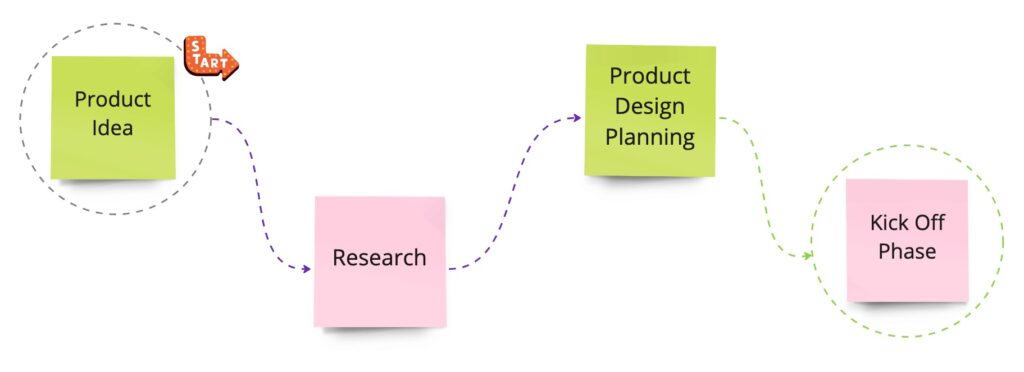
Product design process takes in all factors such as ideation, research, designing, planning and kick off phase that form the basis of a good user experience.
User-centered designs are also produced by following a complete product design process. Designing involves a lot of thinking and brainstorming unprocessed ideas. It takes a lot of imagination to start a product design process.
Product designing is time taking so it should be broken down into small steps so it is achievable on daily basis.
1. Product Idea
The first step is to come up with an idea that none has ever come up with before. An idea that is much needed in the market but hasn’t been implemented.
One that has the potential to make lives easy. Also, you need to find out which product you are going to make.
Ideation

Coming up with strategies and ideas that could help the product grow, so you may reach heights of success. An idea is the baseline of your whole strategy.
The product design process demands an immense level of unique ideas and you have to produce all of them with your own mind. Not to worry, we are here to help.
- Brainstorming
- Mind mapping
- Reverse brainstorming
- Sketching
- Mind-Walking
Wireframing
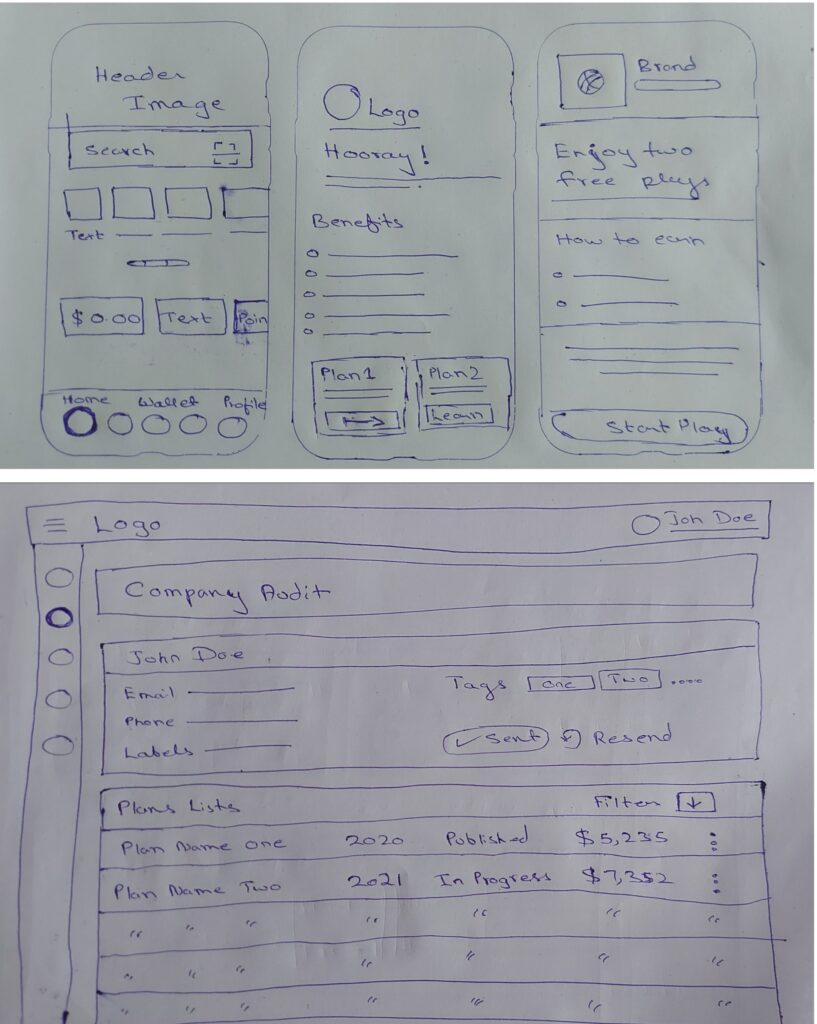
The very first step of every product design process is wireframing which lets designers bring their creative ideas to life. Doing the paperwork gives the exact idea of how to move about.
Almost every UX digital agency focuses on idea gathering through initial paperwork designs.
Implementation
The product won’t come to life unless it is implemented and finally starts its operation. So, it can be refined later on and better solutions can be proposed.
1. Functional Use
The product should be in a state of doing all jobs desired by the user. Therefore, it should clear the stages of the product design process in order for it to be fully fit to go in the market.
2. Appearance
The product’s appearance should be just according to the standards as its the first impression for users. The better the design would look the greater chances it has of being liked.
3. Quality
An undeniable element of the product is its quality. Quality speaks for itself and you need not advertise the advantages of your product. Those who will use it will know.
Product Types
1. Consumer Product
If your product type is B2C then you have to keep in mind the behavior of the users who will use it. There are just too many types of users and the product should be able to fulfill their desired actions.
2. Business Product
Building B2B products is a good way to collaborate with other companies who hire you to work for them. If you intend to a B2B product, then make a list of possible companies who would be using your product. You don’t want to miss the exciting features of the professional platform.
3. Industry Product
Developing industry-specific products is a real challenge because it is going to be used by the masses. These products require higher accuracy as the whole industry relies on them such as the energy sector, medical records, etc.
Industry products are developed on a large scale, so unless you are a large firm you don’t have to worry about making one.
2. Research
Designing a product requires excessive research and every bit of detail should be given full attention. Otherwise, the end product will always raise questions and will need to be verified every time for quality checks. It is better to stick with methods for improving product design to lay foundations of success.
Product Analysis
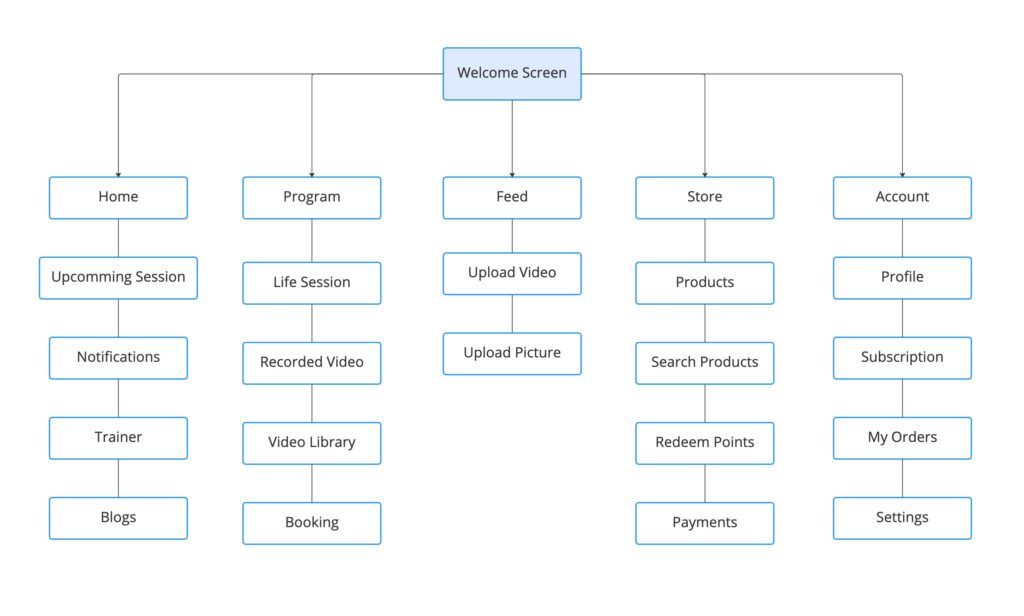
Nothing can ever be done without deep research and analysis. You need to be aware of all the dimensions of the product you will make.
There comes a time in the product design process when researchers are required to find their possible competitors. This is how they will be able to compare the product and apply various UX strategies. Applying these techniques ultimately contributes to product analysis. The product should be made to perform well even when under increased load.
User Analysis
More than half of the research part includes doing research on your users. You need to find the class of people and the particular age group who are most likely to be your users. You may also need to learn about their behaviors by launching online surveys before your product steps into the market.
Behavior Analysis
As success depends on the way users interact with your product, it is important they have a positive experience.
User Behavior can be tracked by the fact that how much time people spend using your product. What features do users like the most and which ones don’t? And finally what cause them to bounce? If answers to these questions are known then it will be easy to improve the performance.
User Mapping and Journey

First of all, you need to find out how are users going to interact with your product. What features could bring in more interest so you could focus on those? The process of research should be continuous to read customers’ minds.
Market Analysis
Now comes the part of the product’s potential in the market, you really need to see around. You must calculate the chances of its success and whether people are demanding anything like your product. You should also know which industry has the space for your product.
Competitor Analysis
Doing thorough research on competitors will help you compete with them. You must know their secret formula to success by closely tracking their moves. It will assist you in your product design process.
Location
Knowing where your customers are located is crucial information. That allows you to learn about a particular area and devise region-friendly product UX design strategies.
3. Product Design Models
By using certain product design models, you can achieve professionalism and prepare products like never before.
To support your product design process, we have gathered some very useful methodologies that you can easily apply:
Waterfall Methodology
In this method new tasks start only when the previous ones have been completed. This method lets you focus on only one thing at a time, which saves you from confusion.
Agile Methodology
Is the Opposite of Waterfall, but this method is differently effective as it involves breaking down the tasks and doing them in smaller parts. The results are much more efficient as one module takes less time to finish.
Design Sprint Methodology
This methodology involves making prototypes so that they can be used by target users. The Sprint method is undoubtedly the most effective method in the product design process as it allows for carrying out tasks in tiny iterations.
4. Kick-Off Phase
The last stage in the product design process and you need to take steps smartly to taste successful completion.
Pre-Launch Phase
First, you need to see if the market is ready to welcome your product, otherwise, the launch may fail. You should be certain that the success rate is higher at the time. Stepping out there without knowing where to go will certainly lead to failure.
Design Variations
No design has to remain the same, there have to be variations to entertain your users. Applying different design tactics is a good strategy to bring something new to the fore. Some are as follows:
1. Maximum Viable
A design that contains ideas and things on a large scale as there is no limit to it. It can include stuff from different places that looks completely new when combined.
2. Minimum Viable
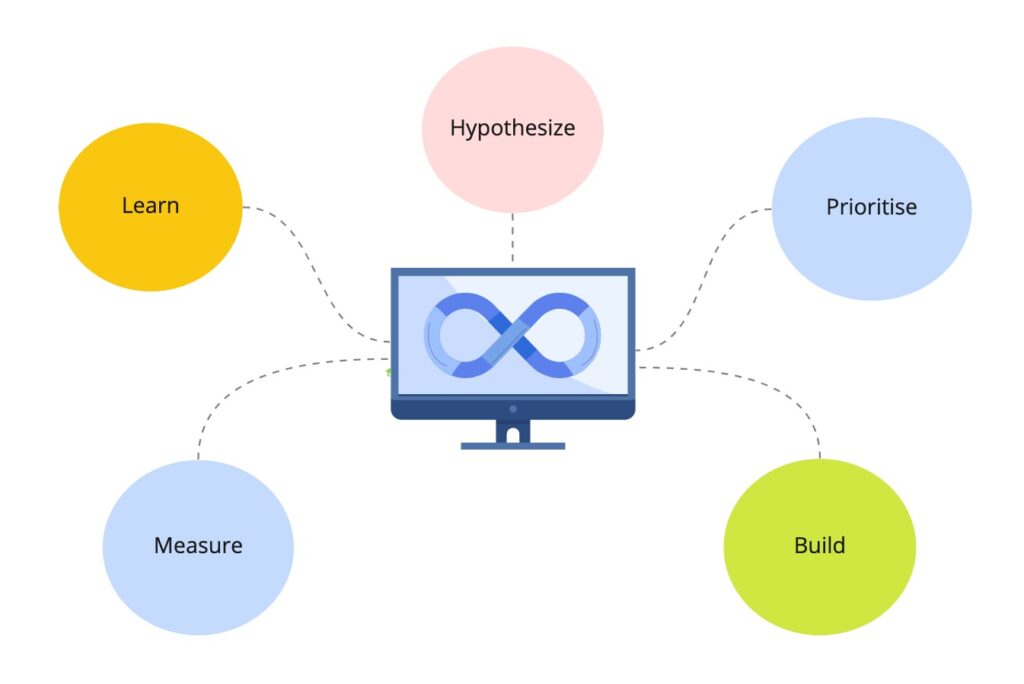
Managing a good design at a low cost is a skill possessed by a few people. All those designs have to be filtered out those do not fit right.
Focus On Trends
The product should be launched into the market only when it is the right time. Only trends can tell you when the time is right so nothing gets in the way. Extra care is needed while launching because you need to make sure the platform is fully prepared to entertain your new product launch.
Post-Launch Phase
If the product is not providing enough value then all the viewership will be gone. Now, this will ultimately result in less traffic and, therefore, all your efforts will be lost. So, it is important to give your customers what they want if you want to uphold your spot. That is why post-launch services are important.
Why do we use the product design Process?
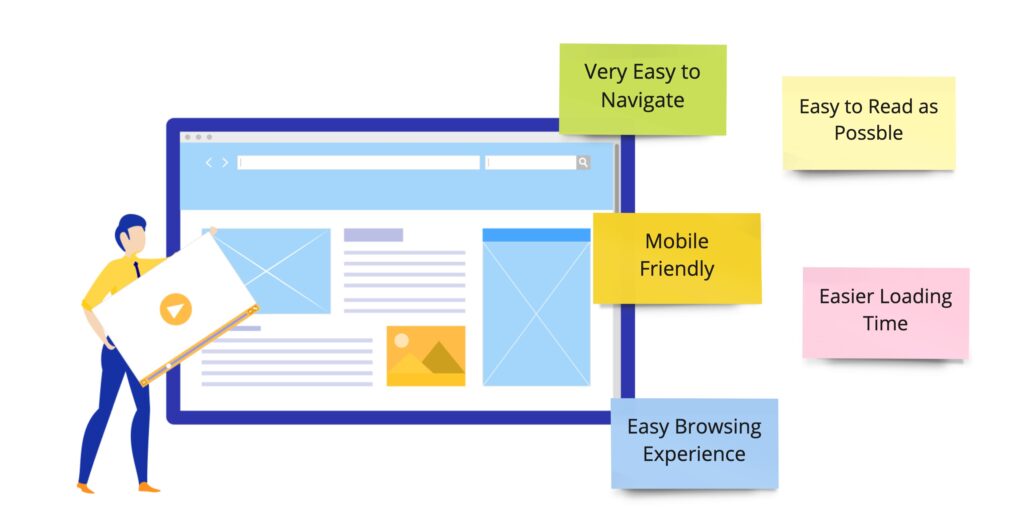
The designs that pass every stage of the product design process have higher accuracy that matches with users’ intent. Those rules include the entire product design methodology that makes it easy to follow the process. We actually use the design process to strengthen the product design workflow. These tactics benefit the makers because they know they are taking users into account.
By following all the stages of the product design process, the designers can professionally come up with user-friendly designs. These designs are easy to use and can be maneuvered according to one’s needs.
Users’ intent is fulfilled by the design that lets them perform their tasks in an easy manner. But if it didn’t, then obviously you will need to change your approach. Changing the approach is just another process that could raise a lot of hurdles. But, as a designer, you must be ready to face the challenges and try to minimize the errors.
A detailed product design is one that covers all design aspects and optimum color effects to attract users. The only best way to fulfill users’ wishes is to provide them with all they want. That’s why it becomes important to follow the whole product design process.
What are the 4 good common features to use in the design process?
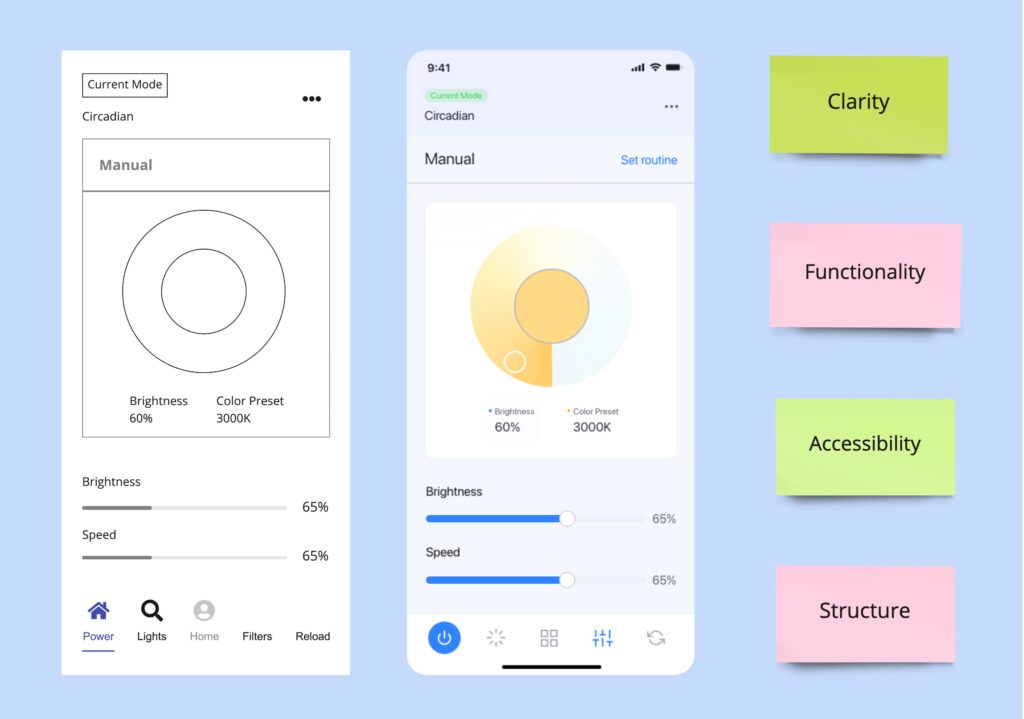
Some common features involved in every product design process are:
1. Clarity
Clarity is what makes things easier to see and understand. A design can never be a good one unless everything it contains is crystal clear. Meaning the users don’t have to spend hours finding the options they are looking for.
2. Functionality
The design has to be responsive and not a victim of foul technicality. Better functionality can help you to prevent heavy loss in a product design process.
Often it gets harder to bear the loss for a small design agency trying to find a name in the market. Functionality can be your true game-changer.
3. Accessibility
A design gets praised only when it is accessible, it means when all its functions are at your fingertips. Therefore, it is up to users again if they rate enough accessibility points to your product. If your product is getting enough points then it is evident that it is making lives easy.
4. Structure
Last but not least, the structure actually gives shape to the overall design. A design cannot exist without having a proper structure, as it gives the design an identity.
The structure is like laying foundations for the actual implementation of the design as it defines the design’s nature.
What are the 7 components of designing?
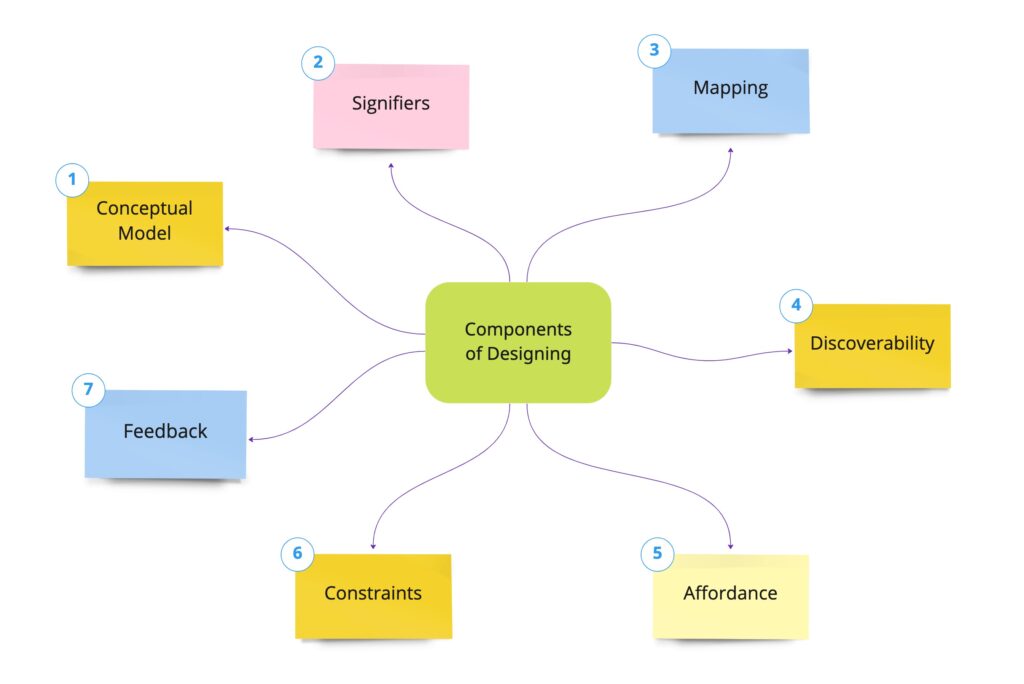
The most important components of the product design process are as follows:
1. Conceptual Model
This model indicates how easy it is for the user to use a certain product. If the user is able to understand the navigation with little effort then it is a sign of a good conceptual model.
2. Signifiers
Signifiers tell the user what is to be done next. For example, if the user needs to go to another screen then what steps need to be taken?
3. Mapping
Mapping lets you know what will happen if a particular action is performed. It tells the user what to do if they want to target a particular thing.
4. Discoverability
Finding the different options should be easy for the users. Discoverability has to do with making all the complex features visible.
5. Affordance
Affordance is the ability of the product to perform its desired actions in a variety of ways. Users tend to apply different methods to achieve a single goal and the product should afford to complete the action.
6. Constraints
Constraints are applied to avoid interference with other functions of the product. If two different functions are being performed, then they must remain in their path and not come into contact with one another.
7. Feedback
Feedbacks play an important role in keeping the users engaged, and making them feel accomplished. There should be a message or a pop-up telling them they have done a good job. This will have a positive impact on their mood.
In order to make your product design process successful, you need to follow the proven strategies that are as follows:
9 Proven Strategies for Product Design
1. Research and Goals Discovery
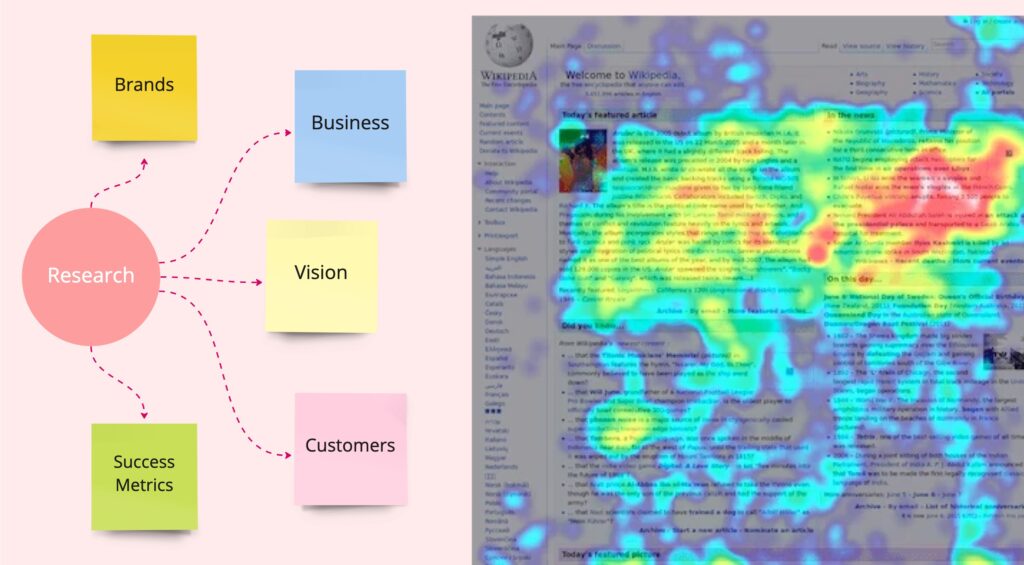
Before starting any product design process, you must clarify what you are going to build. Clearing out the vision will bring the exact picture of the end product that you want to see. Analyzing and researching different dimensions might take some time but will save you from the loss of waste efforts and budget in the long run. As your team would already be on the right track and will have an idea of what to execute.
Here are some proven strategies for the product design process:
- Surveys
- Focus Groups
- Diary Studies
- Usability Testing
Satisfy Internal and External Stakeholders
Without the input of stakeholders, whether internal or external, your product design process may face extreme challenges. Therefore, satisfying stakeholders is the most delicate part cause here you think about the company. External stakeholders have more value as your product’s popularity depends on them. Businesses grooms when people associated are treated well, so it’s just an example of reaping what you sow.
2. Think From The Users Perspective
Research provides enough information that it becomes easy to decide whether to go with the product design process or not. We come to know if our product design workflow is heading in the right direction. If not then there is always the option to stop and start all over again.
Customer Journey Strategy
As a designer, you need to have very strong research skills as it will let you find uncommon things. How users feel when they land on the page. How do they navigate the whole website? What kind of elements are of most interest to them? You will be able to apply these things to your designs and give the best experience to your customers. If you provide customers with ease then they will be happy. This can be achieved by letting them know all about the product at the first glance.
User Testing Groups
When it comes to user testing, you must not forget about focus groups. Focus groups are the ones when different designers gather to test the product for a better decision.
This test lets every individual give their input for a better coming up with a better product.
Customer Interviews
Taking interviews shows you a clear path and lets you learn more about the user’s needs.
This stage is the last one, but you need to make sure it never ends by taking measures to enhance the retention rate. You can retain your users if you do the above steps well and make action-oriented designs to help them convert.
In the end, a well-researched product always takes into account its users. A user journey consists of different aspects of users that have to do with their usage and emotions. The product whose usability impresses the users is said to have a successful user journey.
3. Error Identification
In a product design process, it is important to have a strategy that tells you about possible issues. The issues that have the possibility to occur along the way. It would be better to make such a product design plan with the ability to deal with all the errors.
A detailed product design plan is strong enough to let you proceed despite the tough challenges ahead. Removing errors in the early stages is beneficial but if they remain hidden then could cause difficulties. Errors reduce the product’s quality so they must be avoided.
You have to put an end to errors and give your product a new lifeline where it can find space to prosper. Your secret to developing an error-free product lies in how much you strive to eliminate errors.
Types of Errors
- Aesthetics and Functionality
- Ignoring Users Needs
- Excessive Popups
- Inclusion of Unresponsive Elements
4. Prototype Strategy
Though prototyping is done for many reasons, the target is always one behind them and that is to test. Prototype testing is done to calculate the possible behavior of users once the product is launched.
This testing has 3 stages:
1. Feasibility
Checking whether the product is feasible to use and does it allow ease of use. If yes then you did a great job in meeting the level of simplicity. Simplicity is what customers love and you should too.
2. Desirability
In simple terms, your product should be able to fulfill the desired actions of users. From complex to simple actions, all should be done in an easy way because users hold the key to the product’s success.
3. Viability
Proves the worth of your product and it can happen if you can fulfill the first 2 stages completely. If you are successful in proving that your product is viable then you may be able to attract the attention of the market. This way you can give the reason to the investors to invest in your product.
Prototypes:
Low-Fidelity Prototypes
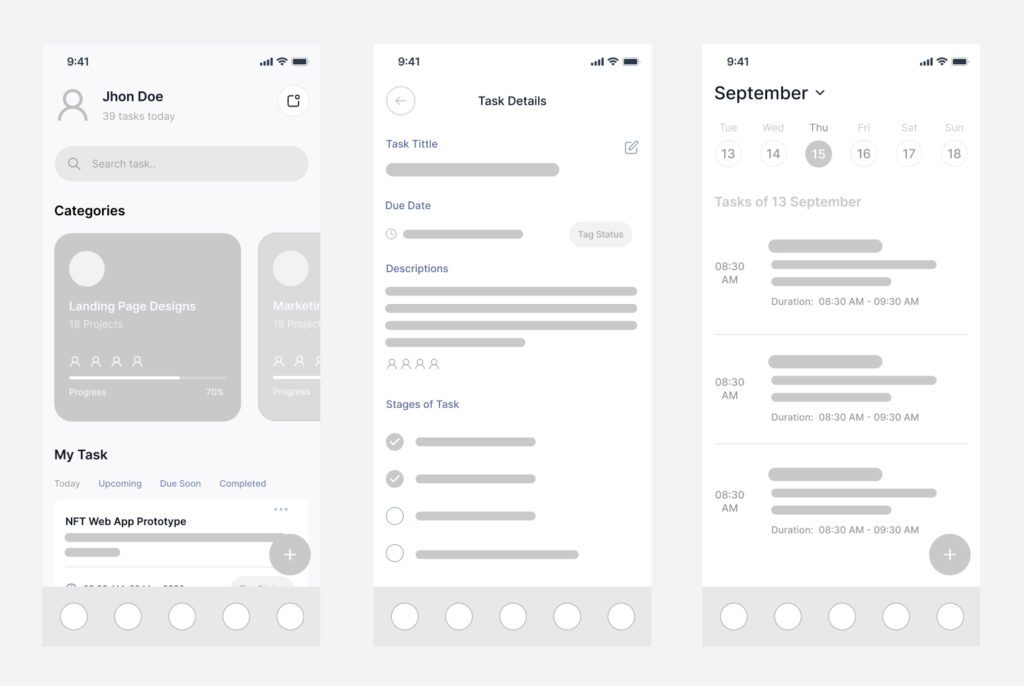
These prototypes are actually a pre-development stage where you make designs on paper. The good thing is you can instantly take feedback from people around you and do the changes in no time.
Low-Fidelity prototypes are a starting point for your whole product design process and it should be done right because all your success depends on this.
High-Fidelity Prototype
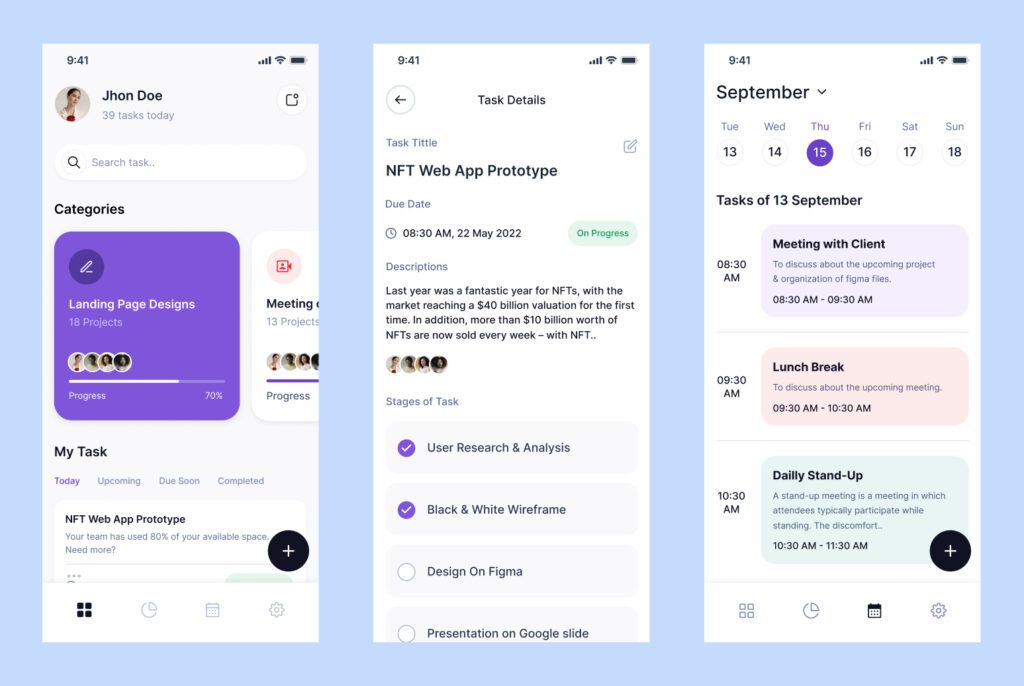
They can be regarded as a copy of the original version of the software that is meant for testing purposes. It gives you deep insight into how much time is needed and how much effort is required from the development side.
It also plays a major role in giving a clear understanding to stakeholders about its usage. They come to know whether your product is ready to go live or still needs modifications.
5. Consumer-Centric Product Designs
Consumer-Centric products are a mixture of user research, user personas, and user stories. We can also take into account prototypes and iterations. Factually, a product must have the qualities of pulling consumers like a magnet.
Furthermore, by applying a customer-centric approach, your product finds its ground. Things get clarified along the way and it helps in achieving the main objective of high ROI.
UX professionals take customers’ interest way too seriously, and they have the opinions of both stakeholders and users. Things are balanced on both sides when users are put at the front.
Empathy Mapping
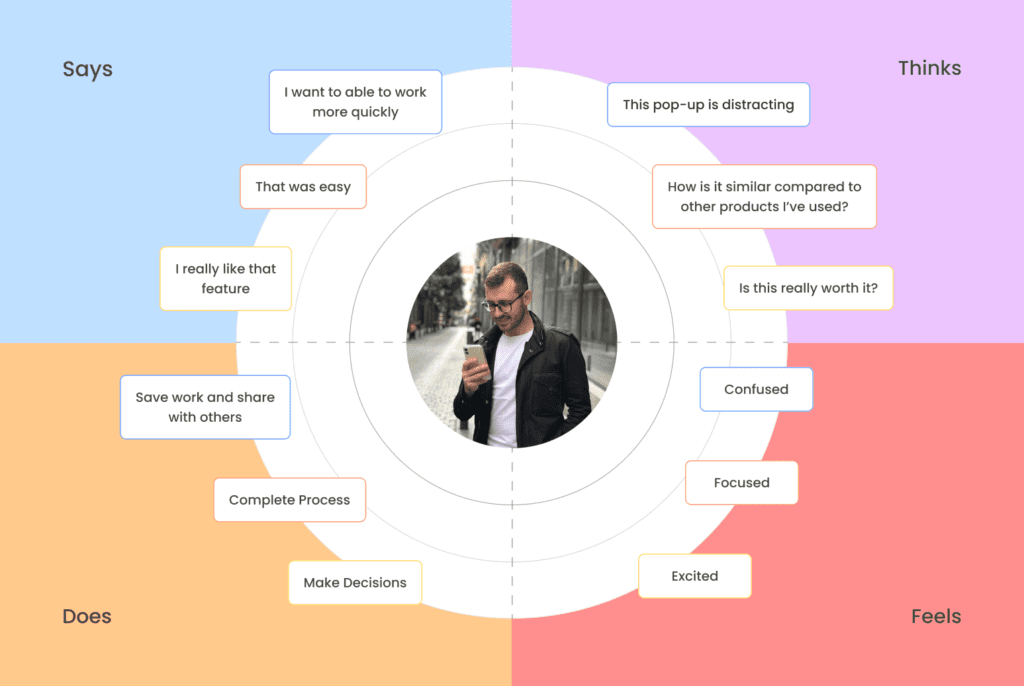
Empathy maps are like user personas where all the user behavior is defined. It has four quadrants by the name of Says, Thinks, Does, and Feels.
Says and Thinks parts are much more similar because they are the views of users communicated through surveys and interviews.
They let researchers know the exact opinion of users about their product. This includes general opinions such as:
- I really enjoy using it
- The navigation is so easy
- I can’t understand the Interface
- It doesn’t let me do XYZ operation.
Does and Feels are very different from each other but somehow related when called Empathy Mapping.
Does refer to what users actually do like:
- Reading the content
- Navigation different aspects
Feels part belongs to emotions and what users think of certain aspects of the product:
- Difficulty in understanding different parts
- Confused or have no idea what’s happening
6. Iteration and Responsiveness Strategy
A responsive strategy is one that enables your product design process to advance with your proceedings in a smooth way. The way that matches the opinion of the masses and is tremendously beneficial for the product.
The responsive strategy helps companies quickly adapt to changes to meet customer needs. It mainly has to do with overall company culture and what strategies need to be applied to make quick progress.
An iterative strategy enables businesses to automate their processes and produce more variety in their domain. A product displays compact features when it has passed through various iterations.
It is very important to get feedback and regularly analyze the data to keep track of any possible changes. Ultimately, you will be able to apply an agile methodology which will let you test and validate frequently. Consequently, you will be moving towards a better version of your product.
7. Swot Analysis Strategy
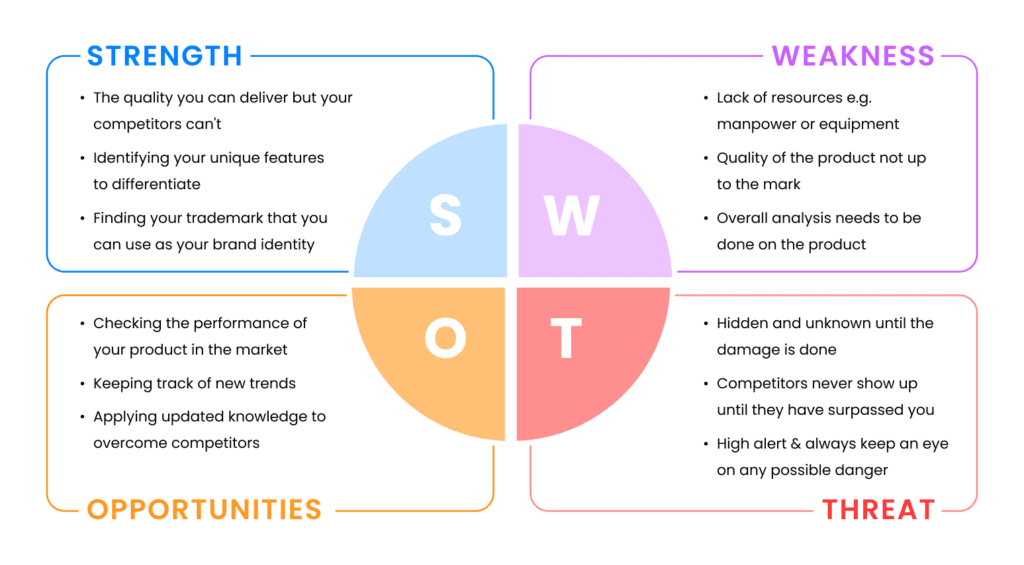
The first step in the product design process is competitive analysis. SWOT is an acronym that stands for Strengths, Weaknesses, Opportunities, and Threats. The SWOTs play a key role in determining the current position of the company. The entire organization can be evaluated, and it is easy to maintain a day-to-day record that way using swots.
SWOT analysis framework is your lone warrior in the product design process because it saves you from errors. Adopting a risk-free strategy yields you the best results because you lose almost nothing. Risk assessment is thoroughly done on all the elements and keeps you updated.
UX agencies heavily rely on SWOT analysis when they have to measure their overall performance. A lot of the hidden errors come to the front when the whole strategy is viewed in detail.
Strength
It is a positive side of your business and keeps you aware of the things you are good at. For example, the market area in which you are the best. The quality you can deliver but your competitors can’t. Similarly, you also need to identify one unique feature that you could use as your trademark to differentiate from competitors.
Weakness
Learning about areas in which you are struggling to find your way. Possibly lack of resources or maybe manpower. Or it could just be the quality of your products. You need to do a top to bottom analysis of your organization to find your weaknesses.
Opportunities
This area is related to the market where you need to see the performance of your product and then compare it with your competitors. Also, keeping track of the new trends and policies gives a cutting edge in implementing new stuff and being on top.
Threats
May not be directly related to you but can impact you at any point in time. You never know what is on the other side and what might come next with whom you have to compete. Keeping both eyes open and doing a deep analysis of your possible threats might prepare you to face them.
8. Understand User Collaboration Tools

One important aspect to consider in the product design process is the consideration of the tools through which teams communicate. As we already discussed earlier that teams collapse and you ultimately go through your worst nightmare because of miscommunication.
There are some useful tools that could prove handy:
1. Slack
Slack can be your savior in terms of internal communication with the team as it has numerous other features that make lively and professional communication possible.
2. Asana
With the help of Asana, tasks can be assigned easily and deadlines can also be marked. It’s an amazing tool that lets you monitor your team’s progress
3. Trello
Trello is a wonderful tool that lets you monitor projects. It lets you drag cards from column to column and gives a light feel. So, it also helps a little in balancing your mood in tough situations.
4. RedBooth
It’s a great project management tool that allows users to have video conferencing and measure progress by making charts. It gets super easy to collaborate and make tough decisions.
5. Flowdock
It’s a professional chatroom where you can collaborate with teams and in private. Its exciting feature called ‘Team Inbox’ lets you have notifications from other channels like Slack, Asana, etc.
The success of your product design process depends on the usage of the perfect communication tool. This is a win-win situation for you and your team.
9. Become an Expert in Product Design Tools

Product designers should have a clear idea of all the tools that they would need during the product design process. Certain tools can help them massively in reaching their target on time to keep their customers happy.
We will bring to light some of the most famous and widely used tools.
Every product designer’s first choice is Figma because it offers all that’s needed. With Figma, designers can also perform cloud-based collaboration which is the need of the hour.
Figma can be a very useful tool for handling big projects and gives designers the opportunity to perform well.
Sketch has been around for a number of years and it has developed into something better with every passing year. Designers get the benefit of making prototypes and collaborating with the team almost instantly.
Is a great tool to innovate design ideas and start implementing them. Product designers mostly use it to produce unique designs that were not produced before. It gives you the opportunity to produce great workflows that match your product design process.
Flowmap is used for making sitemaps that provide designers with a chance to be more creative. Making sitemaps is a big part of the product design process and it needs to be done well. If you use an interactive tool as a flow map then you will fulfill this criterion too easily.
Final Thoughts
The product design process is indeed long and time-taking and requires a high level of attention. Many successful products found their ground by following these proven strategies discussed here.
If you want to see your product touching the heights of success then you have to follow these strategies strictly Devising a product design process according to your own standards can be troublesome as it can harm you. The customer’s choice should be before anything.
Today Google has also raised its standards and cares for people more than the actual product. With the help of intelligent algorithms, Google can easily identify which product provides the best user experience.
Always put user experience at the forefront to avoid making wasted efforts, as it is your gateway to success.
You can also hire a professional product design service for your product and explore better options.






